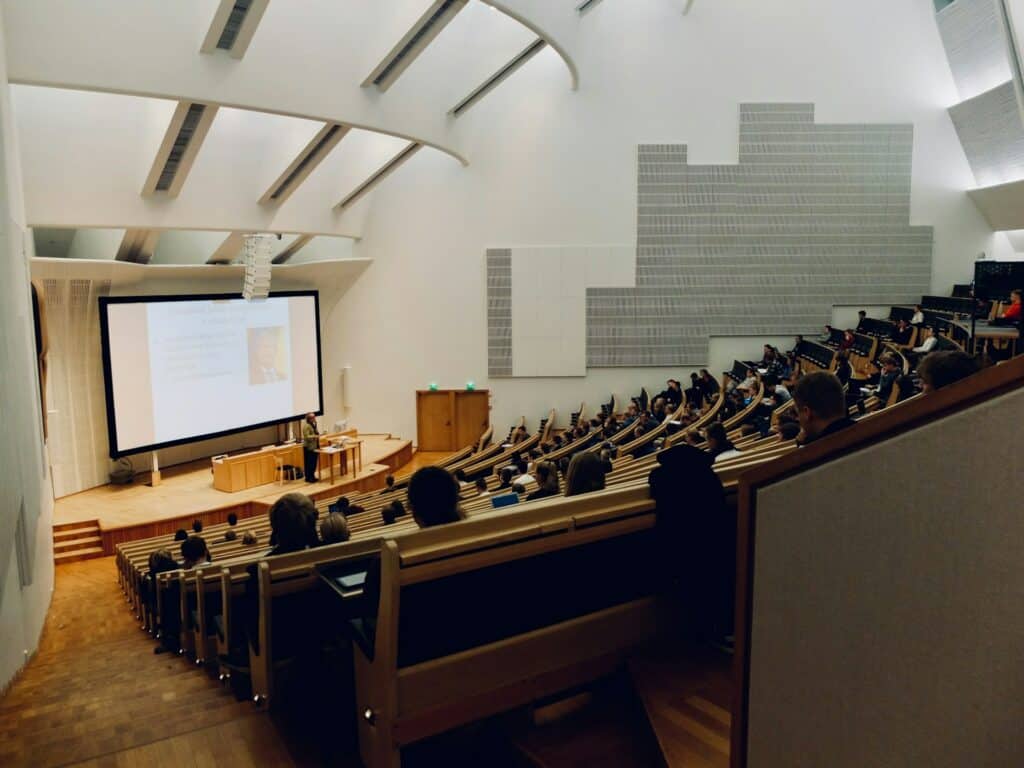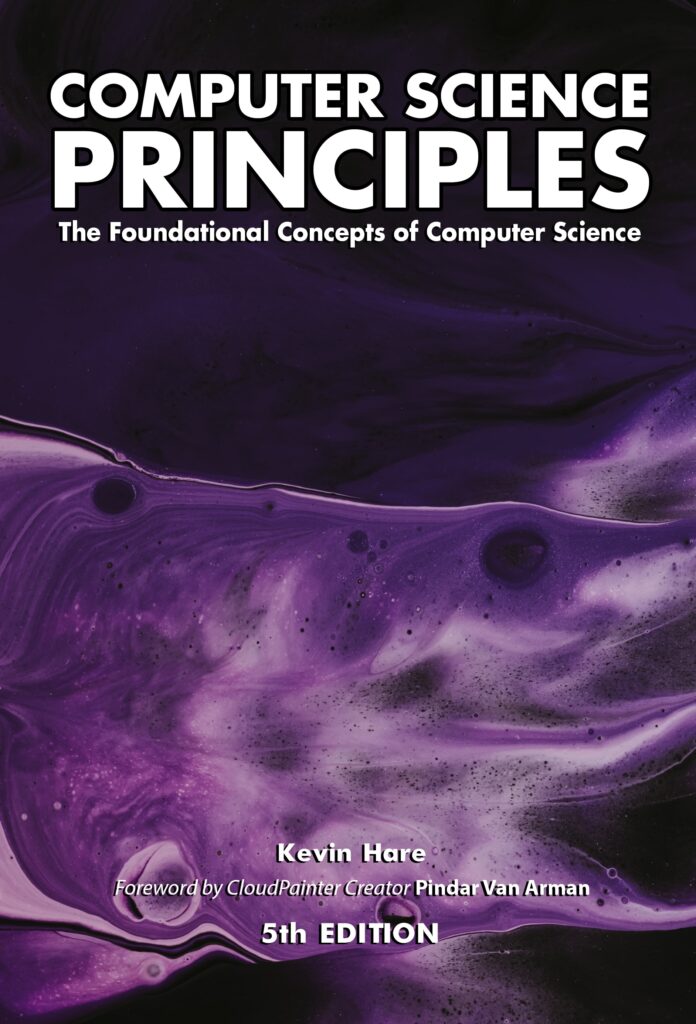Unit 2 – Pixels and Colors | Unit 3 – Compression
Daily Lesson Plans
This material contains a comprehensive collection of 90-minute lesson plans for a semester’s worth of instruction in AP Computer Science Principles to serve as a companion to this textbook. Each lesson plan includes clear objectives, related requirements, a list of necessary materials, a detailed procedure, an assessment method, and a reflection section. The lessons are designed to be engaging and interactive, incorporating a variety of teaching techniques to help students understand and apply the key concepts of computer science. In order to modify the course for a year-long course with approximately 180 instruction days, each lesson plan can easily be spread across two days of instruction.
Textbook
Computer Science Principles: The Foundational Concepts of Computer Science, 5th Edition, Kevin Hare – Yellow Dart Publishing – 2024
Daily Practice Questions
Enjoy complimentary access to a daily selection of 5 random questions from our extensive pool of over 500 thoughtfully crafted questions – even if you’re not a member. Dive into the excitement of learning with these free, rotating questions that change every 24 hours, offering a taste of the variety and depth our content and book have to offer.
Lessons:
Unit Duration:
- 3 hours | 2 class periods (90-minutes)
Project, Test, and Quiz Resources:
Lesson 13 | Group Research
Lesson Plan:
- Using Online Research to Analyze the Effects of Computational Innovations on Society, Economy, and Culture
Lesson Objectives:
- Students will be able to identify and analyze the positive and negative effects of a computational innovation on society, economy, and culture.
- Students will understand how data is consumed, produced, or transformed by a computational innovation and the related storage, security, or privacy concerns.
- Students will be able to collaborate with others, conduct online research, and summarize their findings in a clear and concise manner.
Related Requirements:
- Research skills
- Analytical skills
- Critical thinking skills
- Collaboration and teamwork skills
- Writing skills
- Digital literacy skills
Lesson Materials:
- Computers or laptops
- Internet access
- Template for analyzing computational innovations
Lesson Procedure:
- Introduction (10 minutes): Introduce the topic of computational innovations and their impact on society, economy, and culture. Discuss the importance of understanding these impacts and the role of data in this process.
- Group work (60 minutes): Divide the students into groups of 3-4 and assign each group a computational innovation to research. Provide the template for analyzing computational innovations and explain the expectations for the students’ research. Encourage students to use reputable online sources and to be creative in their research.
- Presentation (15 minutes): Have each group present their findings to the class, summarizing the positive and negative effects, data consumption/production/transformation, and storage/security/privacy concerns related to their assigned innovation.
- Conclusion (5 minutes): Summarize the key takeaways from the lesson, emphasizing the importance of understanding the impacts of computational innovations on society, economy, and culture.
Assessment Method:
- Observation of group work and presentations
- Written template and summary submitted by each group
- Class participation and discussion
Lesson Reflection:
- Have students reflect on their experience with the lesson, specifically focusing on the following questions:
- What did you learn about computational innovations and their impact on society, economy, and culture?
- How did you conduct your online research and what strategies did you use to find reputable sources?
- What did you enjoy about working in a group and presenting your findings to the class?
- How did you improve your research, writing, and presentation skills through this activity?
Mapped Standards:
College Board AP Computer Science Principles (CSP) Framework:
- CRD-1.A.5 Consultation and communication with users is an important aspect of the development of computing innovations.
- CRD-2.B.1 A program is a collection of program statements that performs a specific task when run by a computer. A program is often referred to as software.
- IOC-1.A.4 A single effect can be viewed as both beneficial and harmful based on an individual’s perspectives.
- IOC-1.B.1 Computing innovations can be used in ways that the creator had not originally intended. Some examples include: The World Wide Web was originally intended only for rapid and easy exchange of information within the scientific community; Targeted advertising is used to help individuals, but it can be misused at both individual and aggregate levels; Machine learning and data mining have enabled innovation in medicine, business, and science, but information discovered in this way could also be used to discriminate against groups of individuals.
CSTA Standards:
- 2-IC-23: Discuss the impacts of computational innovations, including the positive and negative effects on society, economy, and culture.
- 2-DA-09: Analyze and refine computational models to explore the impact of data in various applications.
Lesson 14 | Midterm Partner Project
Lesson Objectives:
- To provide students with a clear understanding of the midterm project requirements and expectations
- To familiarize students with the process of selecting a computation innovation topic and researching its data concerns and impact on society, culture, or economy
- To encourage teamwork and collaboration skills through partner assignments and joint project work
Related Requirements:
- Basic understanding of computational innovations and their impact on society, culture, and economy
- Familiarity with presentation software (e.g. Google Slides, PowerPoint)
- Ability to conduct independent research and analyze information
Lesson Materials:
- Project guidelines/rubric
- Computation innovation list (optional)
- Laptops with Internet or presentation software installed
Lesson Procedure:
- 1. Introduction (5 minutes):
- Welcome students and briefly review the midterm project requirements
- Explain the importance of understanding the impact of computational innovations on society, culture, and economy
- 2. Partner assignment (5 minutes):
- Randomly assign students to work in pairs
- Provide each pair with a copy of the project guidelines
- Topic selection (20 minutes):
- Give students time to review the project guidelines and brainstorm possible topics
- Allow each pair to select a topic, ensuring that topics are not repeated
- Collaboration (60 minutes):
- Encourage partners to begin working together on their projects, using the laptops to research and create slides
- Provide assistance and answer questions as needed
- Wrap-up (10 minutes):
- Review the expectations for the final presentation and answer any remaining questions
- Collect preliminary outlines and provide feedback if time permits
Assessment Method:
- The final presentation, which will be evaluated based on the following criteria:
- Relevance and accuracy of information
- Clarity and organization of presentation
- Ability to discuss data concerns and positive and negative impacts on society, culture, or economy
- Effective use of visual aids
Lesson Reflection:
- After the lesson, reflect on the following questions:
- Was the lesson objective met?
- Was the process of selecting and researching topics successful?
- Were students able to effectively collaborate and work as a team?
- Were there any areas for improvement for future lessons?
Mapped Standards:
College Board AP Computer Science Principles (CSP) Framework:
- CRD-1.C.1 Effective collaborative teams practice interpersonal skills including but not limited to: communication skills; consensus building; conflict resolution; negotiation.
- CRD-2.B.1 A program is a collection of program statements that performs a specific task when run by a computer. A program is often referred to as software.
- IOC-1.A.4 A single effect can be viewed as both beneficial and harmful based on an individual’s perspectives.
- IOC-1.B.1 Computing innovations can be used in ways that the creator had not originally intended. Some examples include: The World Wide Web was originally intended only for rapid and easy exchange of information within the scientific community; Targeted advertising is used to help individuals, but it can be misused at both individual and aggregate levels; Machine learning and data mining have enabled innovation in medicine, business, and science, but information discovered in this way could also be used to discriminate against groups of individuals.
CSTA Standards:
- 2-IC-23: Analyze how computational innovations affect society, culture, and economy.
- 2-CS-01: Evaluate the design and use of computational tools and technologies in solving a specific problem.
Unit 2 – Pixels and Colors | Unit 3 – Compression
Membership
For those hungry for more, our membership unlocks the full spectrum of over 500 questions, providing a comprehensive exploration of the diverse topics covered in our content and book. Delve deeper into the world of computer science, enhance your understanding, and master the principles that matter. Our membership also grants you exclusive access to detailed units from the comprehensive book and on our website. From foundational concepts to advanced topics, our units offer invaluable resources to support your learning journey. Elevate your exploration of computer science and make the most of your membership!
Ready to take the plunge into the world of computer science? Start Your Membership Today and enjoy free daily questions along with a treasure trove of over 500 more!
Subscribe to our Newsletter

AP Computer Science Principles/Teacher Certification Prep Course
Get full access to:
- Comprehensive explanations of the concepts
- 500+ Practice multiple choice questions
- Customizable Test Generator
- 90+ Curated videos
- 15 Projects, Tests, and Quizzes (includes all à la carte items)
- 12 Units of materials
- Built-in Block-to-JavaScript practice tool
- All future resources and questions for life!
Unit 2 – Pixels and Colors | Unit 3 – Compression
